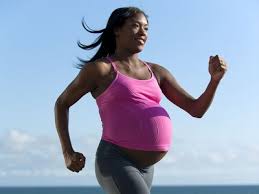Undergraduate perspective on Sports & Exercise Medicine – a BJSM blog series
By Rory Heath (@Roryjheath)
I attended this summer’s Exercise Medicine conference at the Royal Society of Medicine (RSM). The conference had a great mix of applied science and the more modern and fashionable application of digital technology in health, sports and exercise. This is the first of a two part series on the conference’s two central components: Epigenetics and Technology.
I first share my learning points from the lectures on Epigenetics (Deingintion – the study of changes in organisms caused by modification of gene expression rather than alteration of the genetic code itself);
‘Introduction to Epigenetics and Exercise’: Professor William Brown
- In Agouti mice, maternal diet affects offspring coat colour and offspring health.
- How can we affect human prenatal epigenetic changes? Feed pregnant mothers folic acid, vitamin B12, choline chloride and betaine to change epigenome to reduce offspring cancer and diabetes risk.
 May et al. (2012) suggest mothers who moderately exercise had ‘more fit’ babies, whilst Clapp et al. (1990) suggest mothers who exercised at ~50% pre-conception had smaller babies.
May et al. (2012) suggest mothers who moderately exercise had ‘more fit’ babies, whilst Clapp et al. (1990) suggest mothers who exercised at ~50% pre-conception had smaller babies.- Epigenetic changes (methylation of DNA) can be used to estimate age of tissues. Cancerous tissues can display an extra 36 years of methylation.
- Twin studies are useful to compare epigenetic changes. We can also use individuals for epigenetic changes, as humans have both right and left sides. ‘We are our own monozygotic twin’.
- Exercise reduces methylation of tumour suppressor genes, increasing expression
- 60yr old men who exercise have decreased methylation of PAX3 (involved with facial anatomy, muscle and training response), almost as low as 20yr old men. Increased PAX3 development is shown phenotypically as facial asymmetry. Can exercise prevent ageing?
- Exercise changes the methylation profile of different genes in different ways – can ‘flip’ epigenetic profiles. Can exercise reverse ageing?
‘Breast Cancer Epigenetics and Exercise’: Dr Karen Lillycrop
- David Barker, 1986 described that low birth weight is associated with heart disease.
- Studies during the Netherlands’ 1944 famine illustrated effects of poor intrauterine environment on epigenetic changes – children predisposed to obesity and diabetes. Epigenetic changes in individuals are still prevalent 60 years after the famine. Diet is that important.
- Methylation marks are gained from early life, throughout life. Environment affects methylation marks strongly at prenatal, neonatal and pubertal periods. Minimising damage requires education of both parents and children.
- Is the obesity crisis attributable to changes in our epigenetic modifications?
- Physical Activity (PA) is associated with decreased breast cancer risk, increased glucose tolerance and insulin sensitivity. PA can help to reverse epigenetic changes in offspring due to poor intrauterine environment.
- Is there a negative cycle involving generations of poor maternal education and nutrition, offspring nutrition, development and academic performance?
Epigenetics of Metabolic diseases and exercise’: Dr Tina Ronn
- Exercise has much higher effects than expected on gene expression. This results in systemic effects – Exercise that does not improve cardiovascular fitness can still improve biomarkers (Cholesterol, BP, etc.).
- Exercise affects the expression of genes whose products are involved in inflammation (producing adiponectin, bradykinin).
- 6 months of an exercise intervention causes genome wide changes in epigenetic changes in muscle and fat.
- Exercise-induced epigenetic changes can change cellular metabolism. This may be a mechanism for how exercise can impact upon type-2 diabetes.
These lectures on epigenetics illustrate the importance of public health initiatives to educate and promote exercise and healthy nutrition. The key periods of pregnancy, neonatehood and puberty should be targeted to ensure the young and next generations are aware of lasting effects their health choices may have. Finally, the beneficial effects of exercise throughout life on the epigenetic landscape serve to reinforce the necessity of exercise for all, regardless of age.
Keep your eyes peeled for next version of the conference in June 2015, and in the shorter term, part 2 of my blog series: Technology and Digital Health – the future for SEM?!
**************************************
Rory Heath (@roryjheath) is a third year medical student at King’s College London (KCL) and has a keen interest in sport, diet and exercise. He has played county rugby and rugby league for London and South. He is currently the KCL representative of the undergraduate London Sport & Exercise Medicine Society (LSEMS). (https://www.facebook.com/TheLondonSEMSociety). He runs a blog at roryjheath.wordpress.com
Dr. Liam West BSc (Hons) MBBCh PGCert SEM (@Liam_West) is a graduate of Cardiff Medical School and now works as a junior doctor at the John Radcliffe Hospital, Oxford. In addition to his role as an associate editor for BJSM he coordinates the “Undergraduate Perspective on Sports & Exercise Medicine” Blog Series.
If you would like to contribute to the “Undergraduate Perspective on Sports & Exercise Medicine” Blog Series please email LIAMWESTSEM@HOTMAIL.CO.UK for further information.